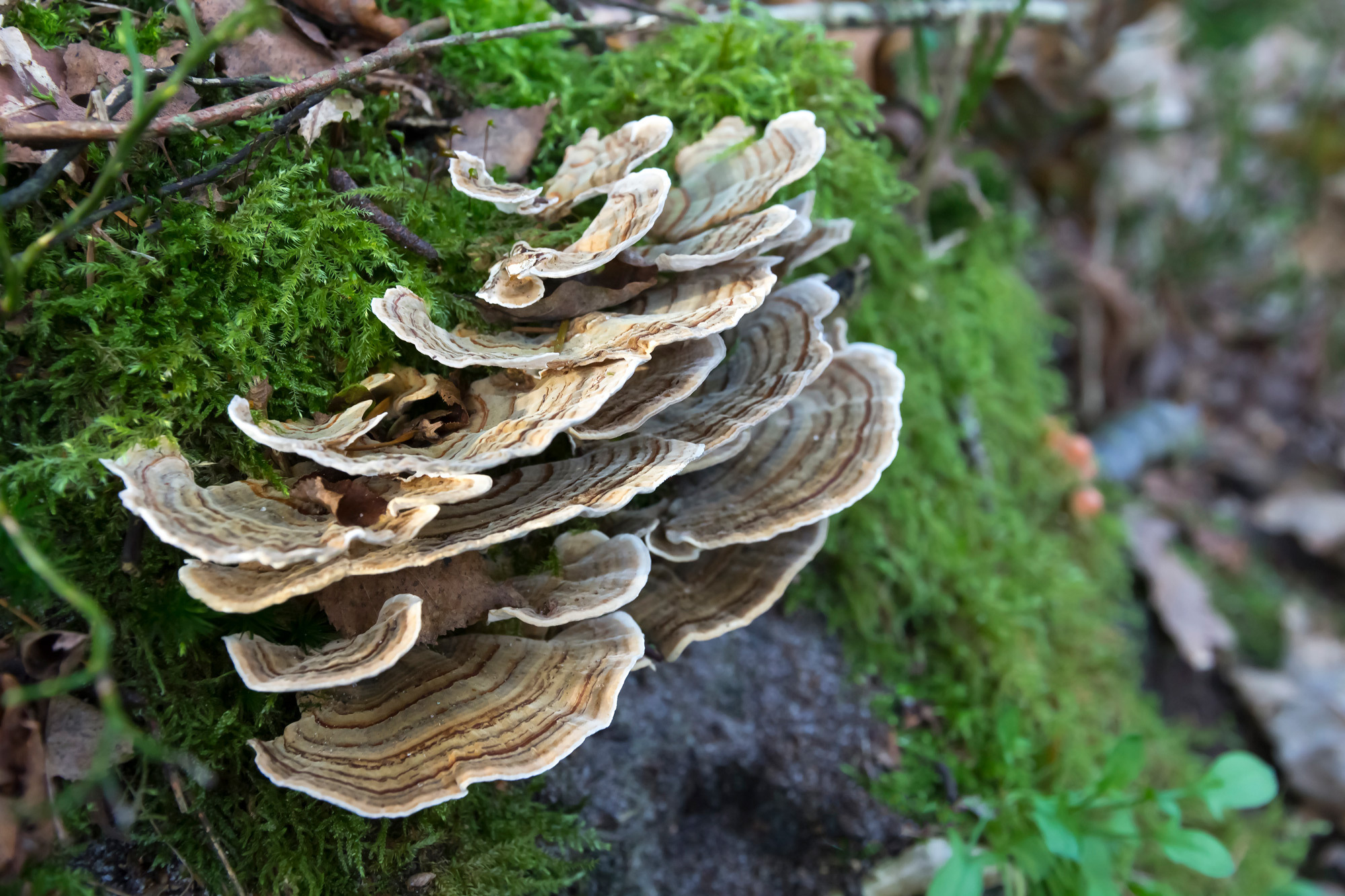Turkey Tail
Turkey tail mushrooms, with their multi-coloured, fan-like growth, are among the most recognizable fungi found in forests worldwide. In Alberta, these mushrooms are celebrated not only for their beauty but also for their historical and emerging medicinal significance.

More on Turkey Tail
About
Turkey tail mushrooms, scientifically known as Trametes versicolor, are aptly named for their resemblance to the fanned-out tail feathers of a turkey. These mushrooms primarily grow on dead hardwood trees, helping in the decomposition process. Their vibrant, concentric circles of browns, blues, greens, and whites make them a delightful sight for hikers and foragers in Alberta's woodlands.
History
For centuries, Indigenous communities in regions where turkey tail grows have recognized and utilized the mushroom for its potential health benefits. In various cultures, especially in Asia, turkey tail has been consumed as a medicinal tea. In Alberta, as knowledge about the mushroom's possible immune-boosting properties has spread, there's been a resurgence in interest in turkey tail, not just as a beautiful woodland find but also as a health supplement.
Ways To Cook
While not traditionally sought for their culinary flavour, turkey tail mushrooms are primarily consumed for their potential health benefits. In Alberta, as in many other parts of the world, the mushroom is often dried and then simmered to make a decoction or tea. The resulting brew, sometimes mixed with other herbs, is consumed as a general health tonic. Some chefs will use it to enhance wild mushroom soups, stews, and stir fries, while some modern health enthusiasts encapsulate the powdered mushroom for daily supplements. Research into the benefits of turkey tail, particularly its potential cancer-fighting properties, has ignited interest in its consumption. However, as with all natural supplements, it's essential to consult with healthcare professionals before incorporating turkey tail into one's health regimen.
